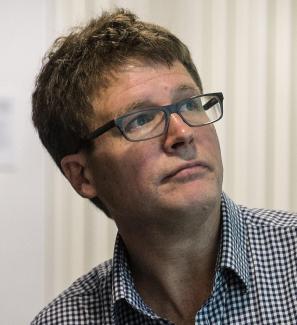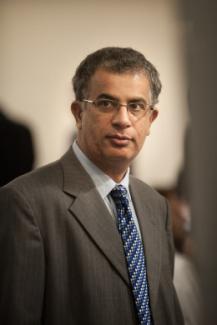Mapping Informal and Formal Providers on the Supply Side of the Livestock Market: Evidence from the Punjab Economic Opportunities Programme (PEOP), Pakistan
The Punjab Economic Opportunities Program (PEOP) is the flagship poverty alleviation initiative taken by the Government of Punjab to address the very high incidence of poverty in the districts of Bahawalpur, Bahawalnagar, Lodhran and Muzaffargarh in Southern Punjab, Pakistan. In the rural areas, the livelihood of most of the households in this region is dependent upon agriculture and livestock related activities. The livestock research team of PEOP has worked for two years on generating evidence through household and community surveys and surveys of supply side providers to identify constraints to raising household incomes in livestock sector, identify gaps in public and private provision and to design and test interventions, like an asset transfer program, which carry significant potential to impact household income levels.
The supply side surveys, completed in collaboration with International Growth Centre (IGC), complement the information captured during the Households and Community surveys. These surveys were carried out with six supply side providers in the PEOP districts of Bahawalnagar, Bahawalpur, Lodhran, and Muzzaffargarh: 1) Veterinary Institutes; 2) Private Vets; 3) Informal Vets; 4) Informal Milk Collection Agents (dodhis); 5) Milk Collection Centers (MCCs); and 6) Cattle Markets. These entities serve a large number of customers who are livestock owning farmers. Private vets and informal vets serve 76 and 103 livestock owners per month, respectively while information about dodhis reveals that more than 89% of their suppliers are farmers. This implies that there exists a dynamic inter relationship between the suppliers in the livestock market and the agricultural rural households in the PEOP region. The relative age of most of the businesses and their sole dependency on one activity for generation of income suggest that they are vulnerable to exogenous shocks. This suggests a need for asset transfer programs which can have a direct and positive impact on the level of income and these entities and give them the capacity to cater to a larger customer base. These surveys also suggest a need for including informal entities into the formal realm to not only help them augment their capacity but also regulate the quality of their services.
Based on the findings from these surveys and in collaboration with Pakistan Poverty Alleviation Fund (PPAF), the livestock team has recently started an Asset Transfer Program in the PEOP region. This new project will use an RCT design to evaluate the impact of asset transfers in 89 villages. The project has two treatment arms and a control group. In the first treatment arm, households will be provided with a menu of asset and a complementary training whereas in the other treatment arm households are also presented with an
option of choosing an equivalent amount of unconditional cash transfers. The project – that is currently in the implementation phase – will provide a causal impact of these two offers on household well-being, and thus, will inform on the effectiveness on the cash transfers versus in-kind asset transfers to ultra and vulnerable poor.





